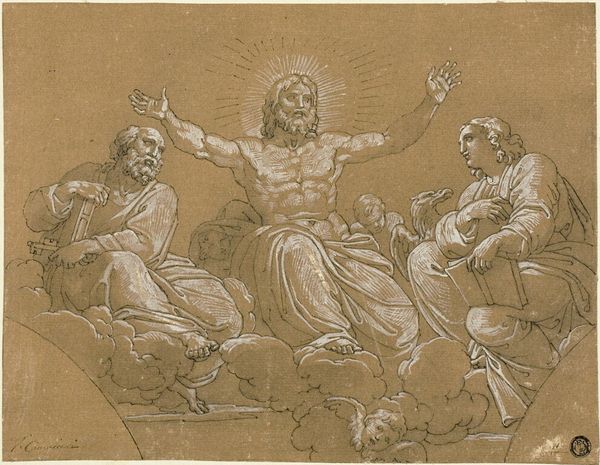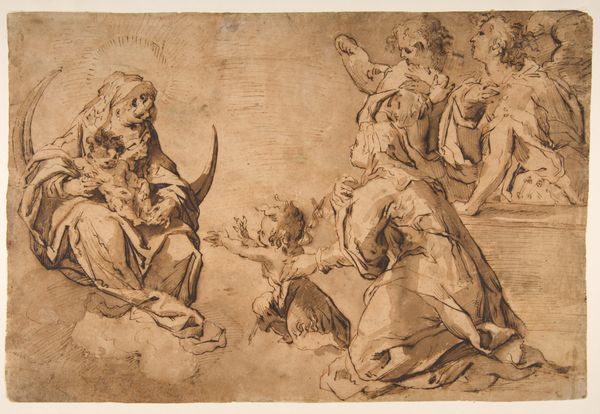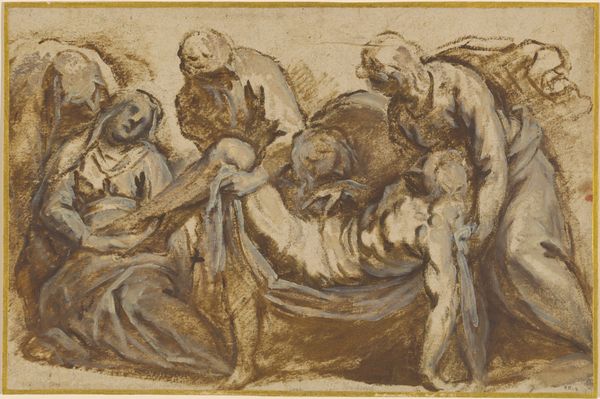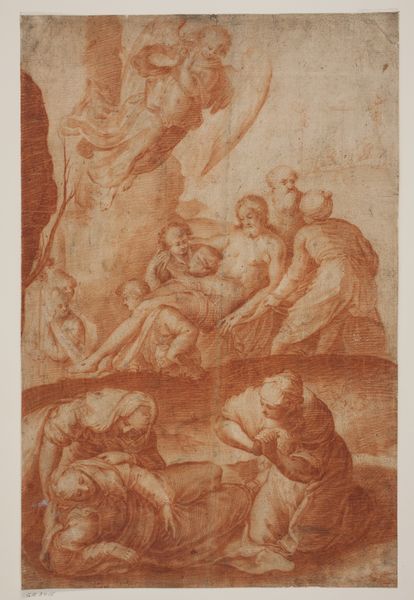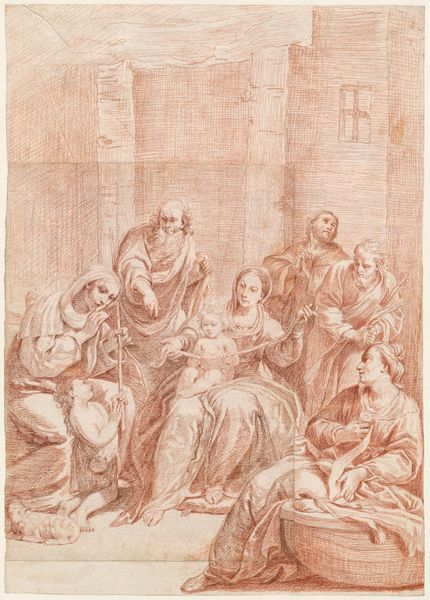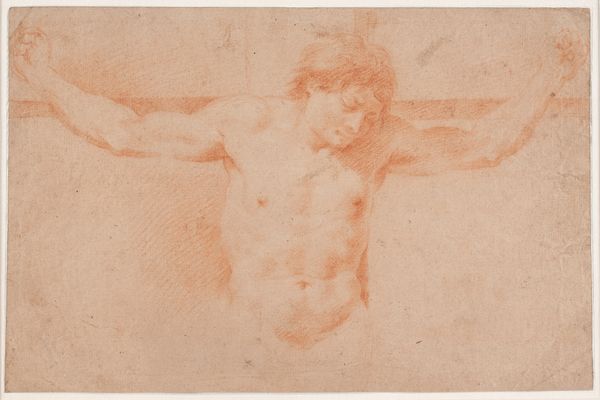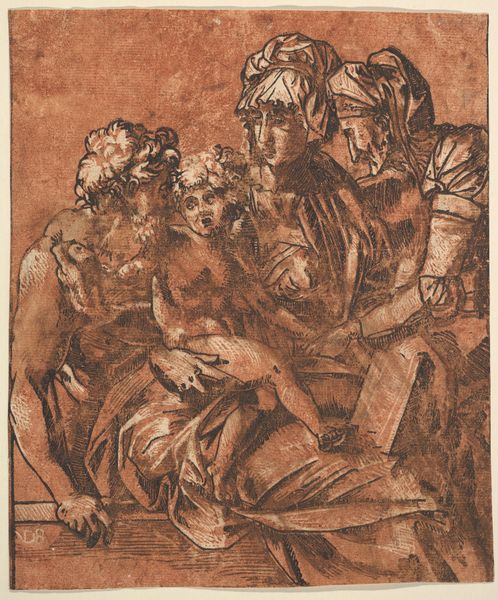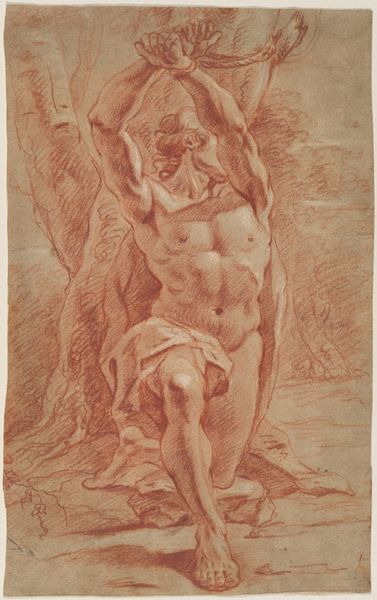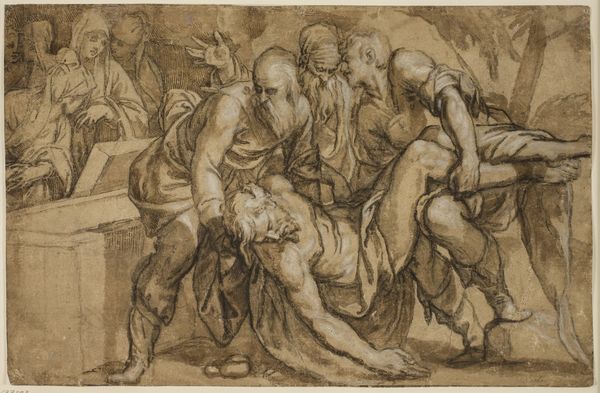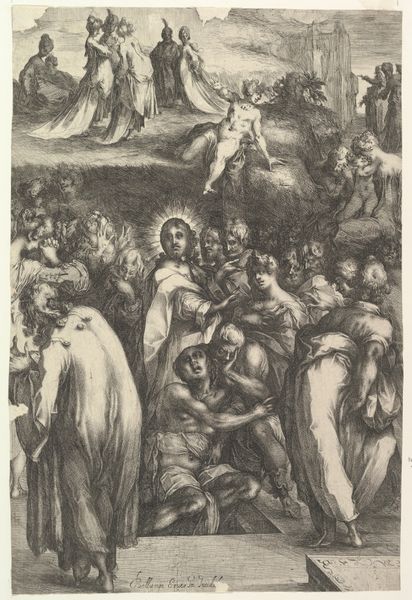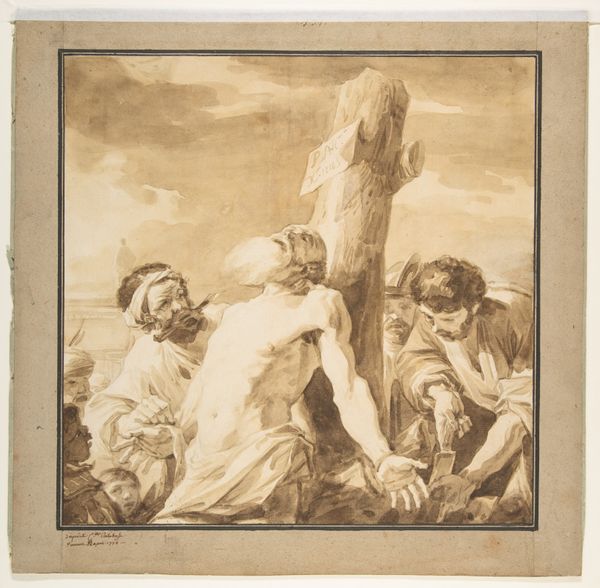
drawing, pencil, charcoal
#
drawing
#
high-renaissance
#
narrative-art
#
pencil sketch
#
charcoal drawing
#
figuration
#
11_renaissance
#
pencil drawing
#
pencil
#
charcoal
#
angel
Copyright: Public Domain
Curator: Here we have Palma il Giovane's "Angel Pietà," a drawing from around 1595 to 1600, rendered in pencil and charcoal. It’s currently housed here at the Städel Museum. Editor: It's haunting, isn't it? The muted tones and the loose, expressive lines create a sense of grief and raw emotion. The central figure really draws your eye. Curator: Absolutely. Palma's skill is evident in his ability to convey such powerful sentiment with minimal strokes. Drawings like this served as studies, explorations of compositions and figures for larger paintings. It really reflects the artistic practices within the religious structures of the time. Editor: Yes, but also outside the confines of commissions and patrons, works like these have long given artists the means to freely confront theological concepts and related anxieties and conflicts. The angel figures feel particularly striking – the androgyny and sorrow mix beautifully. The male figure's wounds almost force us to reckon with a tradition that demands bodily sacrifice to justify social structures. Curator: That's a compelling interpretation. Considering the historical context, this image clearly reflects the Catholic Reformation's emphasis on the suffering of Christ, meant to evoke empathy and piety in the viewer. You have to remember how artworks acted almost as extensions to performative clerical or elite power. Editor: Exactly, it becomes vital to question which identities are glorified in that structure, and how such displays also reinforce a canon that marginalizes other perspectives and identities. Who is offered salvation, and what price is attached? Curator: And this Pietà setup reinforces specific narratives around sacrifice. But the medium adds another layer. These quick charcoal strokes capture raw pain. Editor: It makes me think about how trauma gets recorded and rewritten throughout history, within the structures of political and personal narratives. We cannot see the personal devotion divorced from these sociopolitical conditions. Curator: Indeed, viewing this artwork in this light allows us to reconsider its power and implications beyond its formal artistic qualities. Editor: It reminds us of the importance of continual interrogation of the social contracts and ideologies at play in our visual cultures. A powerful piece on multiple levels.
Comments
stadelmuseum almost 2 years ago
⋮
Among the extant works from Palma il Giovane’s extensive drawing oeuvre are some thirty oil sketches on paper. Like the example on view here, the majority of them served as preliminary studies for paintings. Using a semi-dry brush technique, the artist started by sketching the figures in dark brown. He then executed the shaded sections, likewise in brown, before finally adding several accents in white and ochre. With this method he created a light-dark continuum lending plasticity to the body of Christ and clarity to the figures’ spatial interrelationships.
Join the conversation
Join millions of artists and users on Artera today and experience the ultimate creative platform.

